The preps we stockpile are only an asset if they are in good working order, and we know how to use them. Making a prepper inventory and updating it at least annually (but more ideally on a seasonal basis) will ensure that:
- ✅ all stockpiled canned goods and the like are still in date;
- ✅ fuel is still of a usable quality;
- ✅ gear has not been ruined by rodents or moisture;
- ✅ skills are not only honed but cross-trained among the folks in your survival tribe;
- ✅ rotating foods with long shelf lives out of our pantries, basements, and bug-out bags ensure it won’t be wasted, or worse yet, rancid when we need it the most.
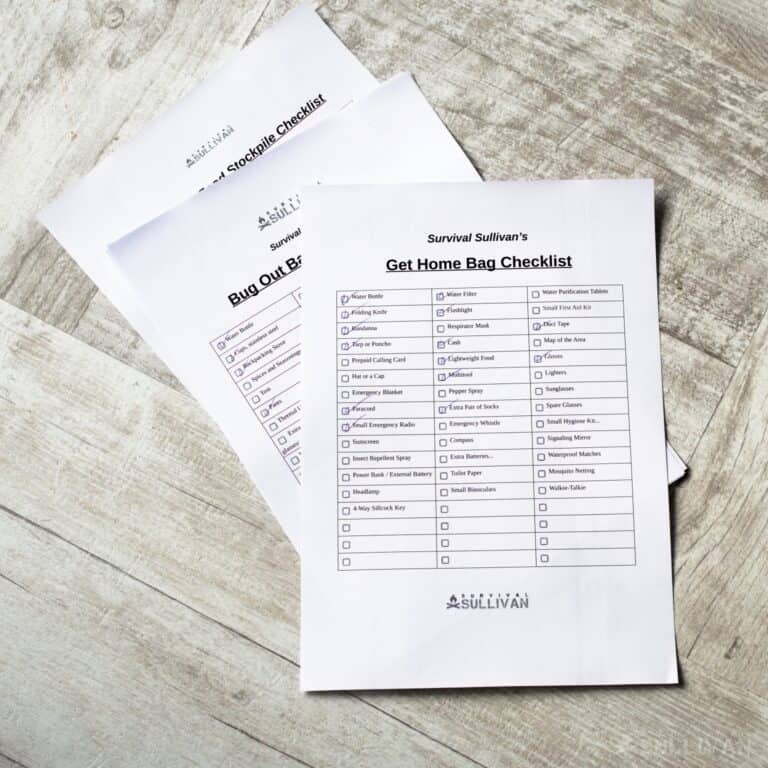
Water and fuel don’t have an indefinite shelf life, either. There is no reason to pitch water once it has gotten too old to be considered potable, it can be purified or used to water plants, to wash with, and sometimes for livestock.
But, you must know how much water you have available for immediate use to ensure enough of it and the supplies needed to purify it, are on hand in case of a long-term disaster.
Conducting a full inventory at least once a year will not only help keep all of the items in your survival gear and supplies categories ready to go when the SHTF, but also give you an exact count of what you have.
That type of statistic is a key piece of information to garner while still building toward what you feel is needed to survive a disaster or any type of duration.
Table of Contents
How to Make a Prepper Inventory
You can simply buy a cheap tablet or legal pad and write down specifics related to every prep you currently own.
There is nothing wrong with going old school when creating a survival inventory, but I prefer to use my laptop to make a template that can be updated quickly and easily – and then print a hard copy.
In addition to making an inventory to deal with exclusively survival items, we also keep a general pantry and freezer inventory. We keep three months’ worth of food for the immediate members of our family in the pantry, deep freeze, and butcher shop freezers.
While the food stored in these locations is logged in the food section of the overall inventory, we keep wipe-off boards posted next to each area, so anytime an item is removed it can be quickly jotted down (so during the next trip to the grocery store it can be replaced).
By saving the file in spreadsheet form I can simply take my laptop with me to the basement, garage, and storage areas and update the quantities to make future inventories go more smoothly or to add new items.
This document can be shared via email with other members of our tribe and placed into a binder once printed, to create a master inventory detailing all the supplies currently available to the group.
If you still want to go old school and not have details about your stockpile subjected to potential internet hacking, use our printable inventory templates featured below. Simply attach them to a clipboard, and hang them next to your preps’ storage areas for rapid reference and updating.
Prepper Inventory Checklists by Category
Instead of making one massive prepper inventory list, your stockpiles will be more organized and available for easy reference if you split them up into categories.
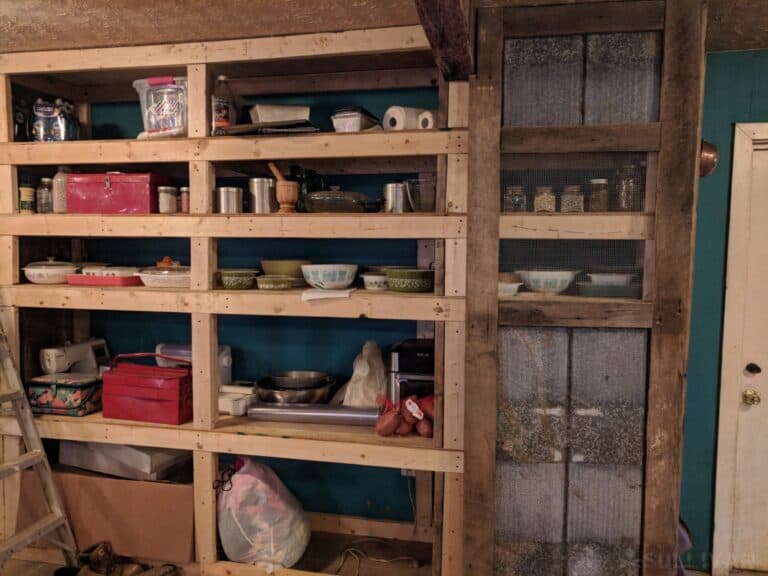
Food Storage Inventory
A prepper’s food inventory should be broken into food groups or nutrient categories. I prefer to use nutrient categories or sections so I can track how much protein we have on hand at any given time.
Food groups can be:
- staples (beans, rice, tuna, grains such as oatmeal),
- regulars (chicken, beef, pasta, corn),
- desserts (honey, peanut butter),
- ingredients (flour, wheat berries, and cooking powders such as baking soda),
- and spices and condiments (salt, pepper, etc.).
The categories are pretty fluid and which foods you put where will depend on your family’s preferences.
In addition to keeping an inventory, you should also keep a producing livestock log, if raising animals is a part of your daily survival homestead activities.
The more specific you are about the type of food that is being stockpiled, the better grasp you will have on how far the food will stretch when it becomes the only source of nourishment for your family or survival tribe.
- Protein
- Fruits
- Vegetables
- Cheese
- Dehydrated Dairy
- Powdered Dairy
- Ready To Eat Entrees
- Ready To Eat Side Dishes
- Drink Mixes
Sample Food Inventory Column Headers:
| Item | Container Size | Amount | Expiration Date |
|---|---|---|---|
| Canned Peaches | 10 ounces | 5 | 10/23/25 |
You could print one set of pages for each recommended food section above to keep the lengthy list more organized and easier to quickly reference.
In essence, print the number of pages of this template needed to cover only proteins, another for vegetables, and so on.
In the container size and type columns you can note if the food is in a manufactured tin can, home-canned, dehydrated, vacuum sealed, etc. along with size in ounces or pounds.
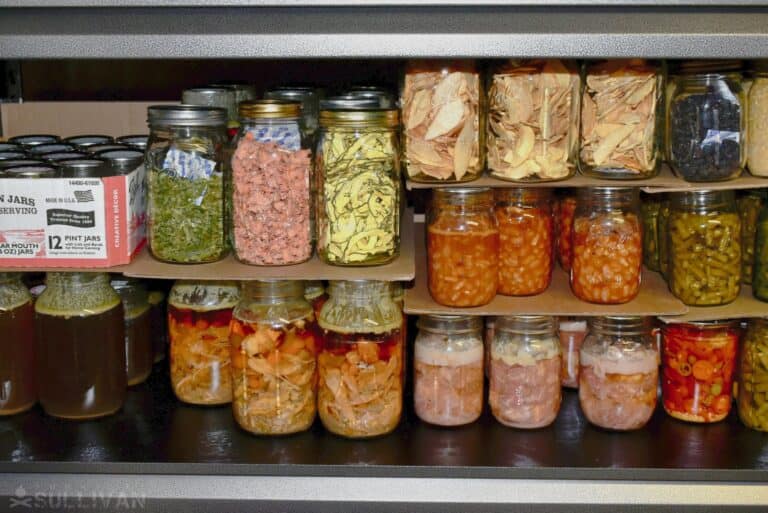
The # Still Needed column below will serve as a guide for future food shopping, food growing, and preservation efforts.
You should determine how much food it will take to feed your family for a specific amount of time, so your prepper pantry will meet that 3-month, 6-month, or one year goal you have set.
Otherwise, you simply have a hodgepodge of food stacked in a garage or basement that you hope will stretch as far as you need it to and meet the nutritional demands of the family and have no way to quantify how the stockpiled food will fill out a survival menu for X amounts of days.
Get our Food Inventory Printable here.
Livestock Food Production and Care Inventory
I keep a daily checklist on a clipboard at my barn so I can note how many eggs we got for the day, and to put checkmarks next to each animal’s name or number to note whether they are in good health, and if they are producing milk when jotting down food production notes about the dairy cows and goats.
Keeping a running total on the food that the livestock provide, as well as the number of healthy animals and the offspring they produce will serve as a guide when closely estimating the longevity of your various herds and flocks during a long-term disaster.
If you keep livestock as part of your food preps (and to help you work the land or for transportation) generate a second inventory chart specifically to address the preps you will need to keep them alive and healthy.
The livestock inventory template below has some lines filled in noting essential and standard preps, and lines left blank for you to complete with specific items you need to care for the animals you keep.
The text in the item column with a dash after it allows space for you to write in specifics, such as feed for different types of animals or different types of tools or supplies needed for a single task – like milking.
Prepper Inventory PDF Template – Livestock And Pets
Water
The water inventory should include far more than stockpiled bottles or jugs on hand. All water purification supplies, Lifestraw filters, rainwater collection system checks, and empty jugs to collect rainwater, should also be a part of this inventory.
In addition to rainwater collection system checks, I also recommend recording the state and prospective gallons that other water collection vessels can provide: swimming pool, bathtub, hot tub, creek, stream, ponds, etc.
If you have well water, you should note any replacement parts you have to fix it, along with any water dippers you have stockpiled, or made to collect water from it in an off-grid scenario.
As with the livestock template a dash after an entry in the item column and empty entries leave a space for you to personalize the entry to suit your specific stockpiled preps.
Get your water stockpile checklist here.
As a rule of thumb, you should aim for 1 gallon of water per person per day – but this is the bare minimum.
Gardening
Remember to plan for gardening both off grid without the use of fuel-powered equipment to prep and tend to the garden, and for indoor growing as well.
During a long-term disaster, you will need to garden year-round to cultivate enough nutrient-rich food to feed your family – even if raising livestock and hunting or fishing is part of your survival good plan.
Gardening and Food Preservation Inventory
Fuel
Stockpiling fuel and the supplies necessary to stabilize it to increase its longevity is a vital part of any survival plan. In our fuel prepper inventory checklist we have included all common types of fuel and left empty entry space for other types or related supplies you may be stockpiling.
Prepping Template – Fuel Template
Hygiene
Hygiene supplies may have a long shelf life, but that isn’t necessarily the case. You also don’t want to be caught unprepared by missing one. Things like toothbrushes, toothpaste, TP, soap, and even bandages should be on your list.
Do take note that some soaps and shampoos have a shelf life, so don’t forget to rotate them as part of your stockpile. Bleach (the unscented version) has a pretty short shelf life of about 6 months.
Get your hygiene supplies inventory template here.
Generators and Lighting
Keeping track of all your off-grid lighting and power sources is yet another essential part of organizing your survival stockpiles. Not only should you record all of these vital items, but test them at least once a month to make sure they are in proper working order.
Generator and Lighting Template
Weapons
If you cannot defend your stockpiles, they will not be yours for very long – nor can you hunt without weapons and trapping supplies. Preppers almost always stockpile various types of weapons, supplies to fix them, and materials to make their own one-time use parts of the weapon.
Our weapons prepper inventory template includes entry space to record multiple variations of specific weapons types as well as different calibers of ammunition you may be stockpiling.
Prepper Inventory Template – Weapons
Tools
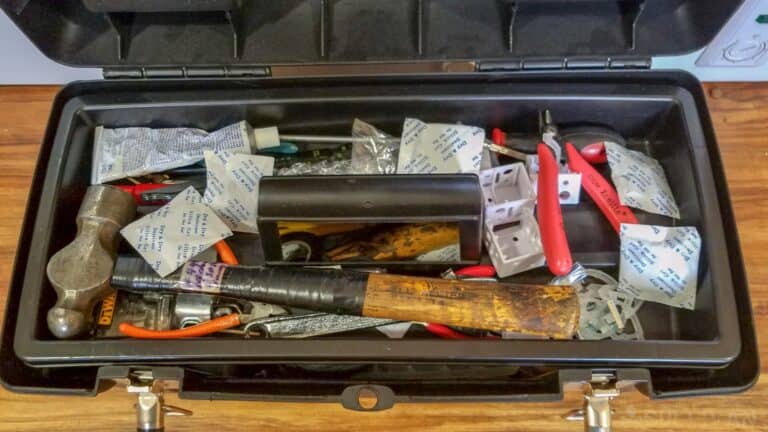
It is impossible to stress highly enough how important it will be to stockpile as many tools as possible before an SHTF event. You will be solely responsible for fixing and building everything you need.
Tools, from the sturdiest of post hole diggers to hand tools to tiny screws, will also make excellent bartering material during the societal rebuilding stage after a long-term disaster.
I left more blank entry space on the tools template than any other knowing the list of tools preppers stockpile is not only nearly endless but specific to the needs of their location and skillset.
Tip: be sure to stock upon plenty of duct tape due to its numerous uses. Another thing you should consider are shelter-building materials for bug out situations. Should you ever have to evacuate, it would help a lot if you could take with you things to help you make shelter like tenets and tarps.
Batteries are another biggie. Stock up on rechargeable batteries in various sizes, as well as a charger that you can plug into an outlet or USB port.
Survival Skills
Not all preps are something you can hold in your hand or stockpile in buckets on a basement shelf.
Creating a prepper inventory of all the skills each member of your family or survival tribe possesses and noting what degree of proficiency each person has in that skills can greatly enhance your self-reliance prowess and guide your overall survival plan.
Get the Survival Skills template
Now, there are many types of essential survival gear and checklists that do not fall in a specific category or overlap. The exact type of survival gear you need will depend both on where you live and your self-reliance skill set.
Prepper’s Checklist
Our Prepper’s Checklist is a basic overall of necessary items all preppers should have on hand or in their vehicles.
It is super small prepper inventory for folks who are new to the survival lifestyle or are working on a tight budget. Get it here.
EDC Checklist
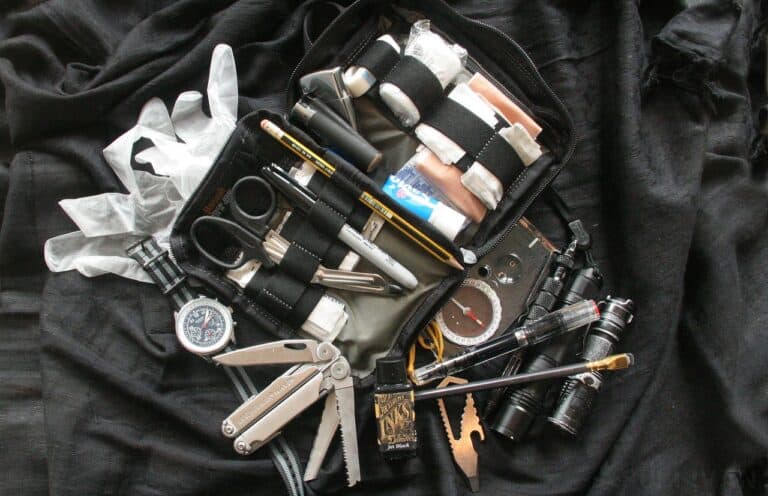
This Everday Carry or EDC checklist covers vital and often multi-purpose items you can carry on your person or store at work to keep handy if the SHTF while you are away from home, and more than a few feet away from that bugout or get-me-home bag locked in your car.
Get the EDC Checklist here.
Off-Grid Survival Prepper Inventory Template
The items on this list will help you prepare to live off grid both at your home, and during a bugout. Even if you are planning to bug in and not leave your well-stocked prepper retreat, planning to bug out should still remain a priority.
A fire, a large band of marauders, or some other unplanned aspect of the SHTF event – especially if you wind up living at ground zero, could rapidly change your plans to bug in.
Get the off the grid template here.
Bugout Location Checklist
Creating a prepper inventory specific to the needs of a planned bugout will help ensure you know exactly what gear and supplies you have at the ready and specifically where they are located after completing a review of the stockpiled items.
Get the BOL Checklist here.
Bugout Bag Checklist
Do you have everything you need in your bugout bag? Are you carrying too much stuff and unnecessarily increasing the weight in your bugout bag?
Open up the survival backpack and review the items on our checklist to make sure you have all essential items and they are all still in date and in proper working order. Get the BOB checklist here.
Get Home Bag Checklist
A bugout bag and a get home bag are similar but definitely not the same thing. A bugout bag is designed to carry more intricate and vital long-term survival items that can sustain you over a long period of time.
A get home bag is just that, a bag with essential survival supplies that will be necessary only for a short while and aid in your efforts to get safely and quickly home from work, school, or some other frequently traveled location.
Get the GHB checklist here.
Martial Law Checklist
Are you concerned about martial law being declared during either a short-term or a long-term disaster? Review our checklist of items that could be highly useful in living through such a horrific set of circumstances to see if you are being prepped as you could be to withstand such a confining situation.
Get the martial law checklist here.
Ready To Start Taking Inventory?
These prepper inventory templates and checklists will help you get organized so you and your loved ones can have a better chance at survival.
Taking an inventory of preps, especially if it is your first time doing so, will be a tedious ordeal and take likely at least an entire weekend – but it is well worth the effort.
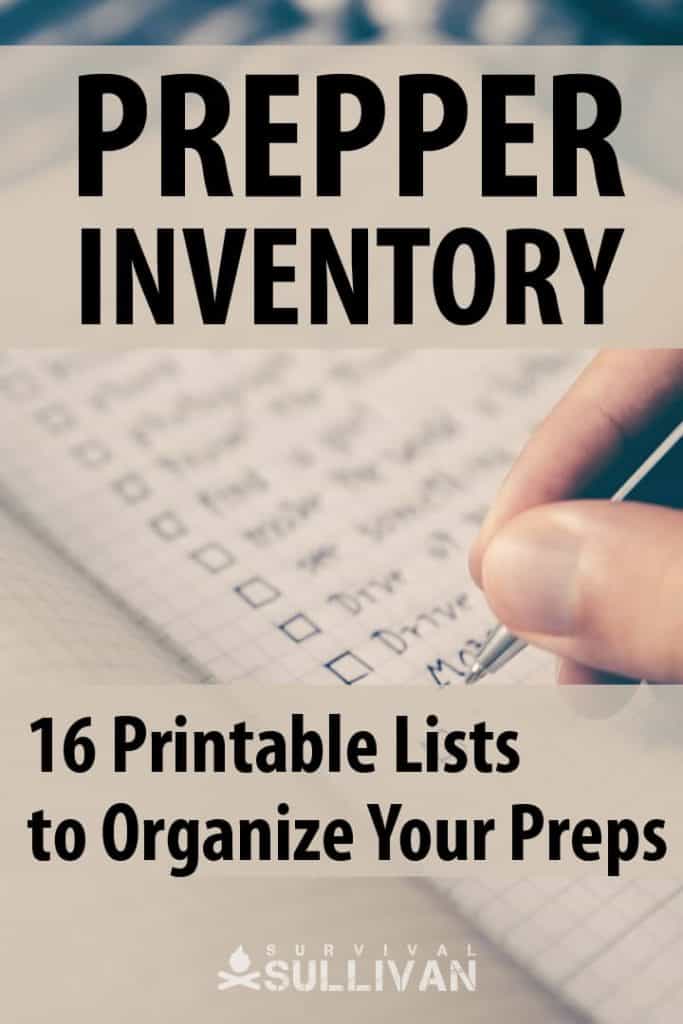

Tara Dodrill is a homesteading and survival journalist and author. She lives on a small ranch with her family in Appalachia. She has been both a host and frequent guest on preparedness radio shows. In addition to the publication of her first book, ‘Power Grid Down: How to Prepare, Survive, and Thrive after the Lights go Out’, Dodrill also travels to offer prepping tips and hands-on training and survival camps and expos.

Thank you Greg, love both the Galileo and Paine quotes – very appropriate for our time!
Thank you for the lists they will be great help. And thank for all great articles.
Your lists are comprehensive and well organized. I have not found anything similar to your checklists after much research. I have read many books on survival, off grid living and preparation. I sense a coming disaster scenario unlike hurricanes, viral outbreaks, or regional civil disturbances. The federal and state governments seems to be lulling the masses into a false sense of security. The “Media” is programming the population into believing the government will solve their problems in the event of a major disaster event. Obviously, this is a mistaken belief.
Whether this event occurs in our lifetime or in the future, being prepared will save the lives of families and communities. Preparation can only be successful if communities of people recognize the value of being prepared.
Civilized behavior disappears quite rapidly when panic overcomes populations.
Your contribution is of tremendous value coupled with the necessary practical skills. Thank you for your fine efforts.
Gracias, thank you from Spain for everything you share with us.
Paco.
when using food buckets the ingredients in the bags are not mixed. if you only take out 1 cup, it won’t taste good . you have to pour the contents into a bowl and mix it up first, then take out 1 cup etc.
Thank You for you help! Your lists and explanations are very well done, easy to follow along/understand and otherwise unobtainable anywhere else (that I’ve been able to locate). I feel, like an ever increasing number of people do, that there will be an unfortunate time that these lists, supplies, and skills will be put to the test, be it sooner rather than later.